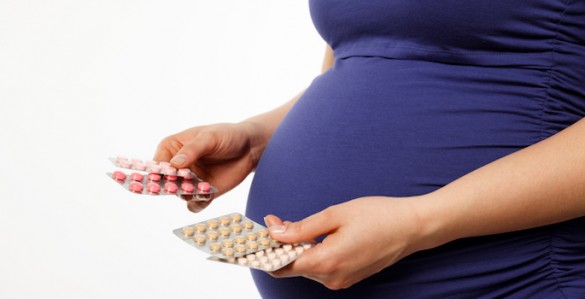A new study from Vanderbilt University Medical Center researchers finds that new mothers who receive opioids after uncomplicated vaginal births face an increased risk of serious opioid-related events regardless of the opioid dosage, a finding that could significantly impact care delivery.
Andrew Wiese, PhD, MPH, assistant professor of Health Policy in the Division of Pharmacoepidemiology, authored the paper published online April 15 in Women’s Health Issues, with Sarah Osmundson, MD, MPH, associate professor of Obstetrics and Gynecology, and other researchers in the departments of Biostatistics and Health Policy.
The study examined roughly 147,000 women enrolled in TennCare — Tennessee’s Medicaid program — between 2007 and 2014 who gave birth and had received one or fewer opioid prescriptions prior to delivery. The median age of the women was 23 years. Most women (68%) were white, and most were from Central and East Tennessee.
The study found that receiving an outpatient opioid prescription within four days after vaginal childbirth was associated with an increased risk of developing a serious opioid-related event, including becoming a persistent opioid user, developing an opioid use disorder, or experiencing an opioid-related overdose or death.
Even women prescribed less than 100 MME (morphine milligram equivalent) — roughly equivalent to 20 hydrocodone or 13 oxycodone pills (5 mg strength) — faced a 52% increase in the risk of a serious opioid-related event compared with those who did not fill a prescription.
“We generally assume that higher dosages of opioids are associated with a greater risk of negative outcomes,” Wiese said. “But we wanted to answer the question of whether low-dose prescriptions were completely safe, and it turns out even low dose prescriptions harbor some increased risk of bad outcomes.”
Although the absolute risk of these outcomes in the first year after birth is relatively rare, given the large number of births that occur annually, many women may be at risk for adverse outcomes with opioid exposure. This research also demonstrates that many of these negative events occur after the traditional 42-day postpartum period.
Wiese also said their primary finding could affect how clinicians, particularly those in obstetrics and gynecology, consider prescribing opioids for women after vaginal births in the future, but establishing best practices is still unclear.
“Our observation that no ‘safe’ opioid dose exists does raise some serious concern, and really should force researchers and clinical providers to take a hard look at what our routine opioid prescribing practices for uncomplicated vaginal births are, even at low doses, in Tennessee and beyond,” Wiese said.
Other team members included Ed Mitchel MS, Margaret Adgent, PhD, MSPH, Sharon Phillips, MSPH, Stephen Patrick, MD, MPH, MS, Arlyn Horn, PharmD, MPH, Lauren Samuels, PhD, Marie Griffin, MD, MPH and Carlos Grijalva, MD, MPH. The research was supported by the National Institutes of Health and the National Institute on Drug Abuse.















